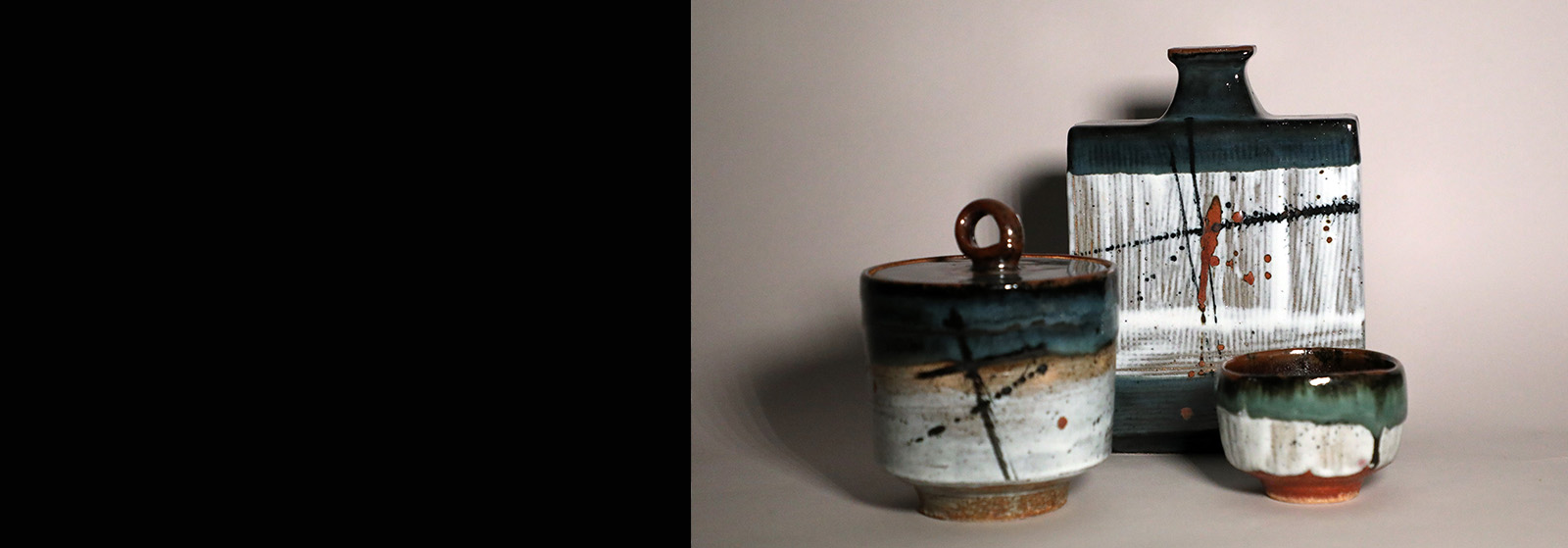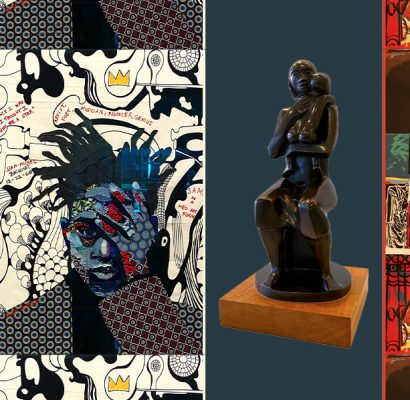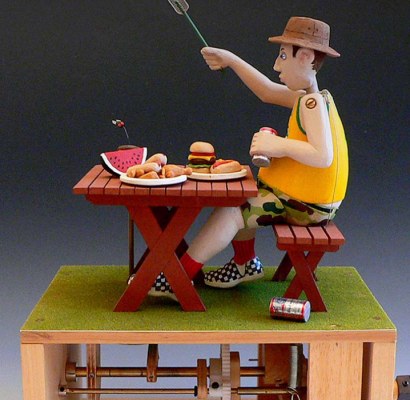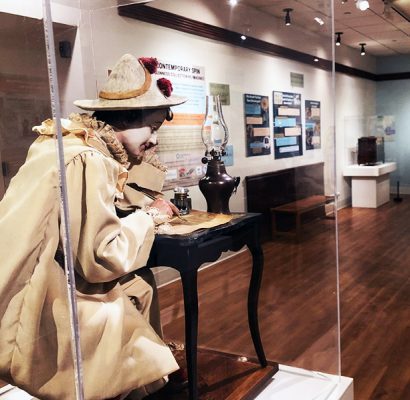

New Jersey artist Albert Green (1914–1994) earned the term “master” ceramicist through decades of diligent experimentation in high-temperature glazing, or the application of layers of glass over a ceramic form.
Green retired from a management position in retail clothing sales in the late 1970s to devote himself to ceramic production full time. His work traveled with the Smithsonian Institution exhibition American Porcelain: New Tradition in an Ancient Art, and was viewed by enthusiasts in the United States, Malaysia, Singapore, Indonesia, The Philippines, Japan, and Hong Kong in the early 1980s.
Largely self-taught during the 1940s and 1950s, Green used his glazes to transform ceramics from a hobby to an art form, pushing boundaries and expanding what was possible to accomplish with non-commercial kilns. He recognized that the “glazes covering the strong, simple forms made colors more vivid than any kind of paint.” Meticulous notebooks, together with the glaze samples on display in this gallery, document his process of experimentation and repetition, inevitable failure interspersed with exceptional examples of the highest level of artistic achievement.
This exhibition explores his inspirations and innovations. Ceramics on view were donated to the Morris Museum by Hortense Green in 2004. The Albert Green collection is open to researchers and scholars for study by appointment.
Exhibition curated by Anne Ricculli, Ph.D., with Michelle Graves, Assistant Curator, and in conversation with Beth Green Olesky, daughter of Hortense and Albert Green.
Image Caption: From left: Albert Green, Oval Bowl with Lid, n.d. Glazed ceramic. AG2004.14. Small Bottle, n.d. Glazed ceramic. AG2004.36. Tea Bowl, n.d. Glazed ceramic. AG2004.43. All ceramics Gift of Hortense Green.


